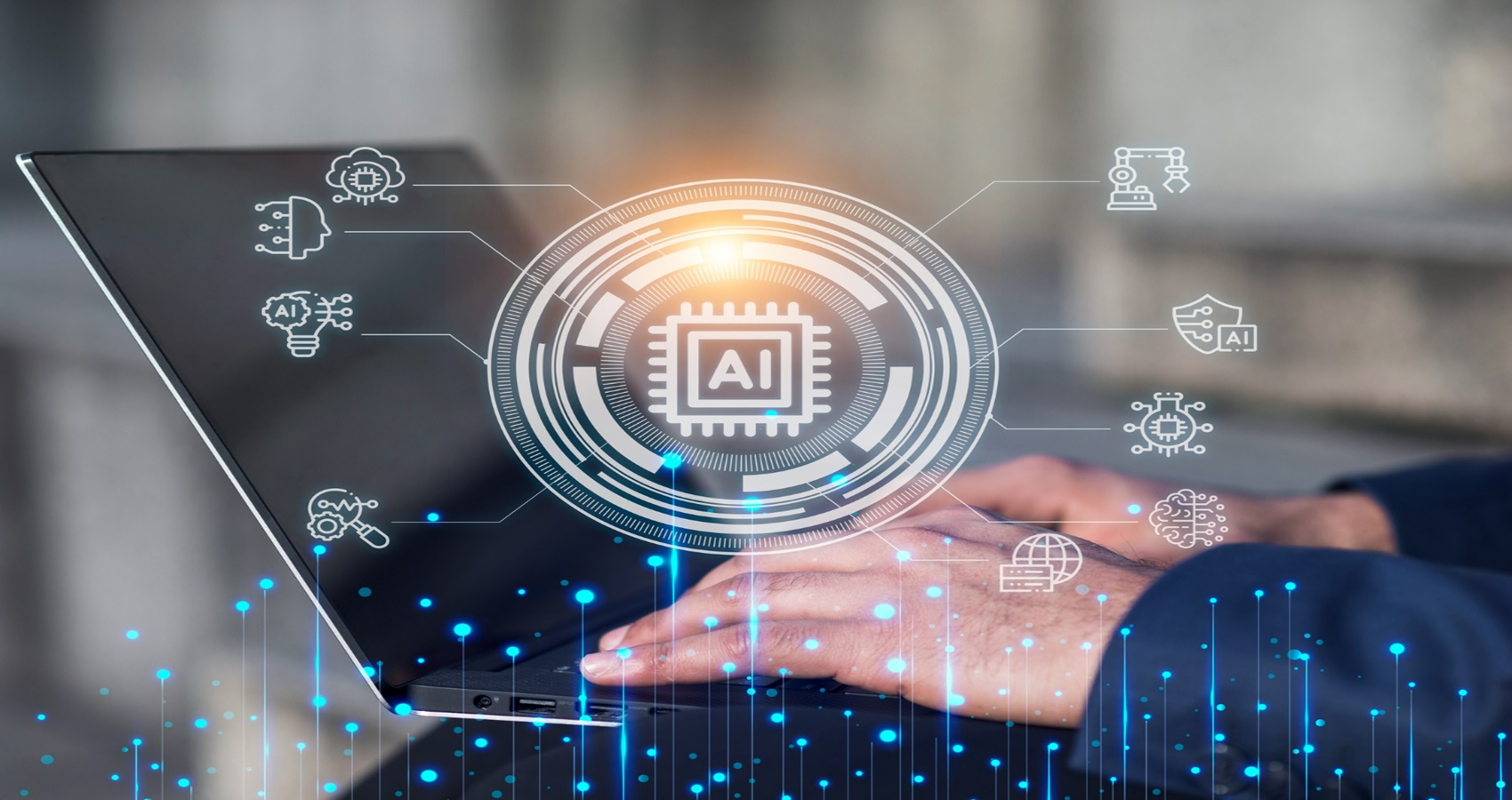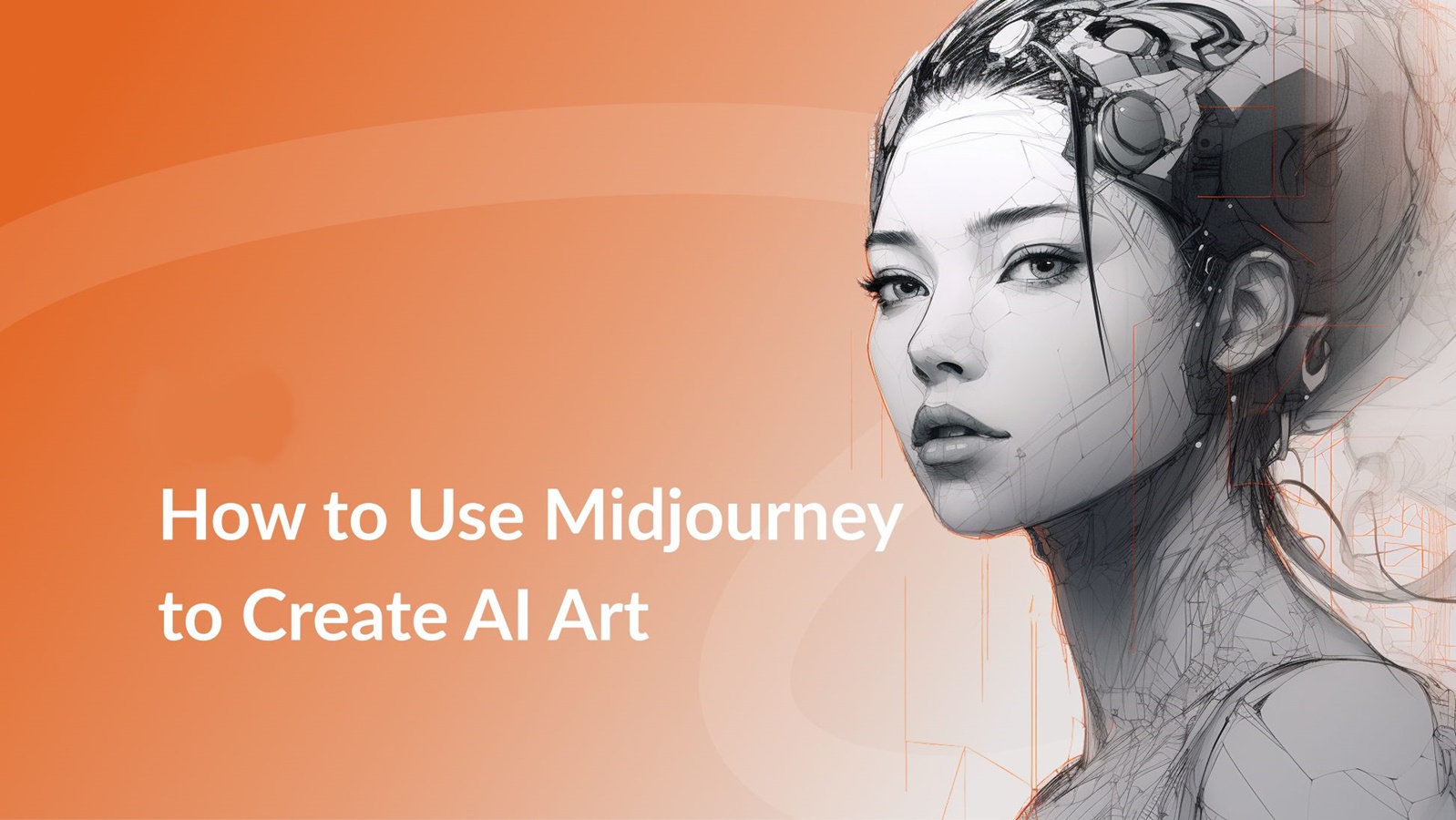AI innovation is steadily transforming learning processes and instruction techniques to make classroom experiences more adaptive, immersive, and easier to quantify through data-driven feedback and assessment. In this guide, we explore the most impactful current and emerging AI applications in education across primary schools, universities, vocational training institutes, and remote learning platforms. 1. Customized Teaching Plans AI algorithms help create tailored lesson plans by assessing individual learning patterns across parameters like: Platforms like Century Tech, Dreambox, Querium, Third Space Learning, and Sesame Workshop offer personalized content recommendations and customized curriculum pacing. As students progress through topics, their pain points and strengths are used to prioritize lesson plans. Course correction is also faster through focused remediation instead of one-size-fits-all class progress. 2. Automated Grading Manual evaluation of lengthy subjective assignment responses, essays, coding projects, and speech presentations is extremely time-consuming for teachers. AI grading tools analyze response data across hundreds of linguistic, semantic, and disciplinary criteria to assign scores and provide formative feedback for students on improving arguments, programming logic, or speech delivery based on rubrics. Vendors like Gradescope, Netex, Jill Watson, and WriteLab leverage natural language processing techniques to expedite scoring across humanities, sciences, and coding courses. Auto-graded results significantly expand assessment capabilities for teachers. 3. Immersive Content Delivery Interactive simulations, gamified experiences, and adaptive apps powered by AI deliver highly engaging content while providing better visualization and recall for students across STEM topics which involve spatial, abstract, or dynamic concepts that are hard to grasp from textbooks. For instance, Alef Education’s Mastery software uses AI to generate questions personalized to strengthen each student’s understanding as they learn complex engineering and computer science concepts through visualized simulations. Generative AI models also assist teachers in creating tailored immersive environments like decision simulators, 3D spaces, and conversational assistants which respond to student queries with expert knowledge. 4. Real-Time Translation Machine translation models enable multi-lingual classrooms where students speaking different languages can follow lessons by providing real-time speech-to-text transcription and translation into 60+ languages. Mobile apps like Google’s Live Transcribe, Microsoft Translator, ELSA Speak, and Enlearn automatically recognize and translate speech into preferred languages, transforming accessibility for non-native speakers during lectures and discussions. Contextual translation will further enhance understanding across languages for globalized curriculums as generative AI advancements produce more sophisticated conversational systems. 5. AI Teaching Assistants AI teaching assistants like Jill Watson from Georgia Tech answer student questions posted in forums, remind them of assignment deadlines, provide pointers to online resources, and monitor course progress through ongoing conversations at scale, enabling on-demand support. Smart chatbots handle administrative tasks and basic queries to provide 24/7 access to university-level teaching competence through knowledge bases spanning millions of parameters on par with human assistants. As natural conversation capabilities mature, such AI aides are equipped to mentor students on academic writing, provide coding debugging, and offer subject tutoring support with generative computation abilities for explaining concepts, sharing examples, and clarifying doubts. Implementing AI in Education To responsibly integrate AI, schools must evaluate specific pain points across syllabi development, personalized progression tracking, scoring workflows, content creation, and student communication channels that can be enhanced through these emerging techniques. Some recommendations include: As schools overcome initial adoption barriers, AI promises to elevate global education infrastructure towards more equitable access and better outcomes at scale. The incremental efficiency gains also accelerate overall advancement across both established and emerging disciplines. The Future of AI in Education Upcoming edtech applications leveraging conversational AI, improved computer vision, and extended reality interfaces will further augment both teaching and learning processes through enhanced content experiences, deeper personalization for progression tracking and scoring, as well as cost optimization of training delivery across geographies. Multimodal AI advancements will also assist differently-abled students through tools tailored to respective learning needs while helping balance workloads for teaching staff. These autonomous systems integrated with collaborative human and AI instructor networks represent the next benchmarks in revolutionizing global education through intelligent automation.
What is Layer 0 in the blockchain?
The blockchain technology stack is often compartmentalized into layers that have distinct roles with increasing levels of abstraction. Beyond the commonly known layers like 1, 2, and 3 that deal with core ledger functionality, asset interaction, and applications, respectively, a vital part of the blockchain ecosystem with growing prominence is what’s known as layer 0. Layer 0 refers to the base infrastructure fabric that powers blockchain networks. Just like the networking and server infrastructure form the foundation over which internet applications are built similarly blockchains also need robust layer 0 solutions to operate efficiently at scale. In this guide, we dive deep into foundational blockchain infrastructure to better understand the expansive set of technologies that can be categorized under layer 0. Why is Layer 0 needed? Being decentralized peer-to-peer systems, blockchains have unique infrastructure needs and limitations that are distinct from the current web2 architecture, which relies heavily on centralized servers. Some core technical and operational challenges in blockchain infrastructure that layer 0 aims to solve include: Robust layer 0 infrastructure that offers speed, scalability, efficiency, privacy and security is vital for blockchains to achieve mainstream adoption and meet demands across industries. Scope of Technologies in Blockchain Layer 0 Now that we have a broad overview of why advanced infrastructure is pivotal for blockchains, let us map out key components that collectively make up layer 0. 1. Decentralized Data Transmission Networks Dedicated decentralized data networks optimized for blockchain distribution enable faster and more secure delivery of large volumes of time-sensitive messages. Lightning network channels for Bitcoin and state channels on Ethereum that transmit data off-chain are early examples of such layer 0 networks. An advanced implementation is the Starry Internet to support growing Web3 demands. 2. Accessibility and API Gateways Onboarding to blockchain networks involves configuring components like nodes, tools, wallets, and storage explorers. Improving accessibility through managed gateways, ready toolkits, and simplified APIs is key for adoption. Platforms like Alchemy, Infura and Ankr abstract away blockchain infrastructure complexity for developers through intuitive API access. 3. Data Availability Engines Data computation needs to sync across decentralized networks for blockchain systems to progress. Specialized databases known as data availability engines propagate and maintain verified data copies across nodes to meet availability demands. Off-chain databases like Arweave, Swarm, and IPFS provide permanent storage and recall, while on-chain solutions like Optimism depend on data availability fragments built into layer 2 chains to avoid getting constrained by layer 1 throughput limits. 4. Optimized Consensus Networks Consensus is the core process where distributed nodes agree on the state of blockchain networks. Several layer 0 solutions offer consensus optimizations like increased participation and accelerated block production to improve transaction speeds, scalability, and decentralization. Parallel chains (or parachains) in Polkadot, along with cosmos zones and the Cardano network, run in parallel using variants of the proof-of-stake consensus mechanism to achieve interoperable, high-performance layer 0 networks. 5. Sidechain Protocols Sidechains are separate companion blockchains that connect to and transfer data to/from popular base chains like Bitcoin and Ethereum to bolster their capabilities. They enable scaling while retaining security guarantees of the underlying network. Drivechains, RSK and Liquid sidechain are prominent examples that use new consensus models based on the Bitcoin network to provide faster payments, smart contracts and confidential transactions respectively as layer 0. 6. Zero-Knowledge Compute Encryption schemes like secure multiparty computation and zero-knowledge proofs (ZKP) introduce privacy in data transmission and computation which are lacking in traditional blockchains. Developments of encryption standards at layer 0, like Halo 2 and zkSync 2.0, spearhead innovation in private smart contracts and anonymous payments. 7. Quantum-Resistant Cryptography Most blockchain security hinges on cryptographic hash functions which face potential compromise from advancing quantum computers. Transitioning networks to quantum-resistant cryptography through signature schemes like BLISS and lattice-based encryption strengthens security guarantees. Protocols like QAN enable quantum-safe Digital Signatures as a Service, while solutions like IronBridge provide toolkits to blockchain developers to future-proof smart contracts and apps against quantum-based attacks even before scalable quantum hardware exists. 8. Identity and Key Management On-chain identity across users, nodes and networks with interoperable DID (Decentralized Identifiers) and unified DKMS (Distributed Key Management System) schemas enables stronger authentication, verification, and accountability. Identity protocols like decentralized PKI by ShoCard, peer DIDs by Microsoft, and Dfinity Internet Identity leverage Layer 0 for self-sovereign identity management across chains and dapps. 9. Sustainable Energy Infrastructure Blockchain mining operations have faced increased scrutiny over excessive energy demands and carbon footprint concerns. Transitioning networks to use renewable energy sources through supply chain tracking systems and geospatial infrastructure mapping tools provides a sustainable path forward. Layer 0 green energy infrastructure like ImpactScope and the Energy Web Foundation foster climate-neutral growth of blockchain networks. Real-World Use Cases Powered by Layer Beyond the technology architecture, Layer 0 unlocks several real-world use cases by making blockchains truly enterprise-grade across metrics like transaction volume, speed, finality, privacy, sustainability, and ease of access for developers. Some examples of applications powered by Layer 0 advancements include: Conclusion Layer 0 represents the blockchain’s core infrastructure fabric, comprising networking, identities, databases, APIs, sidechains, zero-knowledge encryption schemes, and other base components that execute core functionality and provide the foundation over which higher-level blockchain layers and their applications are constructed. Ongoing innovation focused on scalability, security, privacy and ease-of-use at the infrastructure layer unlocks the next wave of blockchain adoption across industries as networks morph into full-fledged cloud-like platforms through a rich layer 0 ecosystem delivering speed, cost efficiency and regulatory-grade trust and safety guarantees
Generative AI in the Metaverse: Opportunities & Challenges
The metaverse represents an amalgamation of persistent virtual worlds, augmented reality, digital identity management and cryptocurrency payments into a shared virtual realm. Generative AI emerged in parallel as a set of machine learning techniques that can automatically synthesize fresh, original content matching specified textual or visual inputs. As the next evolution of social connection platforms, there lies immense scope for generative AI models to enhance immersive environments, asset creation workflows and discovery in metaverse spaces by generating 3D objects, responsive NPCs, contextual recommendations and even influencing the underlying mechanics through intelligent automation. In this guide, we dive deeper into the interactions between AI image generators, 3D model creators, physics engines and recommendation systems with various components of the Web3 ecosystem to analyze how they will collectively shape metaverse experiences of the future spanning connectivity, creativity and commerce. Table of Contents Skillsets Touchpoints Between Generative AI and Metaverse There are five core technical domains where generative AI models can assist, enhance and even autonomously handle functions to determine metaverse environments based on user prompts and contextual signals: 1. Computer Graphics – Generating 3D models, textures, materials and landscapes matching desired aesthetic designs and physics parameters through diffusion-based deep learning image generators and 3D reconstruction neural networks 2. Conversational AI – Producing reactive NPC dialogue, virtual assistants, shopping guides, support tools and GM bot interactions leveraging reinforcement learning on sequential text prompts 3. Recommendation Systems – Suggesting social connections, events, custom items and locations by analyzing usage history, preferences and real-time user behavior signals 4. Simulation Environments – Populating responsive worlds with automatic avatars, decor, theme designs aligned to participantREQUESTS through adversarial generation matching simulated constraints 5. Game Mechanics – Dynamically adjusting in-game economy variables, level progression pacing, asset attributes and narrative arcs using automated game balancing algorithms on player feedback Key Opportunities Across User Engagement, Asset Design and Maintenance Some of the key value additions from integrating generative AI techniques into various metaverse elements include: 1. Enhancing User Engagement More seamless environments through consistent art direction, personalized recommendations that anticipate needs, and reduced platform friction with auto-generated resources enhance general enjoyment. 2. Streamlining Asset Design Automated 3D model generation, material suggestions and layered prompting workflows significantly accelerate environment development letting creators focus on higher-level oversight. 3. Improving Maintenance Processes Automated quality assurance, user behavior analytics and deployment coordination minimize effort overheads for asset integration and platform upkeep after initial release. Privacy and Bias Challenges For responsible and ethical integration of AI alongside metaverse worlds, some critical challenges around transparency, consent and representation require deliberation: Emerging Startups Building the Future As both generative AI and immersive virtual worlds advance exponentially, these startups represent some of the innovative ways they jointly shape future tech evolution through synergistic offerings: Artificial – Leveraging AI to turn simple sketches into fully rigged / animated 3D characters usable across metaverse environments Dimensional – Photorealistic avatars generated completely from images bringing lifelike fidelity to virtual representations Hour One – Text-to-animation model generating cinematic quality films matching text descriptions to easily produce dynamic media content Recur – Browser-based metaverse creation platform using AI models for instant high-quality asset generation from photos or drawings Megaverse – Toolkit for developers to simply integrate conversational AI capabilities creating interactive NPCs and PCs within Unity games The Outlook on Combined Potential As generative AI and metaverse spaces mutually develop over the next decade, their combined potential spans imagination enablement, multiexperience convergence and broadband as well as computing advancements. Creators will wield god-like generation capabilities to author dynamic worlds bound only by imagination while persistent global digital unification could drive unprecedented knowledge exchange and push innovation velocity to new heights. With sci-fi-esque futures closer than ever, the limitless horizons however warrant increased deliberation to ensure technological progress also creates equitable opportunities, upholds civil liberties and minimizes unintentional harm as we prepare to transition human experience itself into shared planetary-scale virtual spheres. Responsible innovation prioritizing trust and transparency will hence pave the way for realizing the full extraordinary promise these exponentially developing capabilities together unlock for enhancing lives globally.
How to Use Midjourney to Create AI Art?
Midjourney is one of the most popular AI image generation services that allows users to create stunning visual art just by describing it in words. Leveraging the latest advancements in deep learning and computer vision, Midjourney opens up creative possibilities for casual hobbyists and professionals alike. In this beginner’s guide, we provide tips to master Midjourney through understanding capabilities, prompt structuring techniques, styling examples, and integration workflows to publish your AI artworks. Getting Access Midjourney is currently in beta and requires joining a waitlist from their website. Once granted access, hop into the Discord server for the web interface and detailed prompt instructions. They also offer a starter pack of 25 free image generations for trial usage. Paid subscriptions provide bulk tiers of images/month afterwards through various packages. Students get discounts for extended trials enabling extensive skill development. Capability Overview Using text descriptions, Midjourney generates original AI art by “imagining” how the words combine to visually treating prompts as creative inspiration. Results fuse various training references through neural representation transformation behind the scenes. You guide the output style and composition leaving the actual pixel synthesis to the algorithm. This allows realizing ideas difficult to manually create like imaginative sceneries or fusing disparate concepts into hybrids. Structuring Prompts Well-formed prompts enhance prompt-to-image conversion success through clear communication of intent providing the AI model enough context and creative boundaries. Some prompt formulation tips include: Try leveraging these descriptive elements as “modifiers” applied over your core idea as the “subject”. Enclose within quotation marks and separate using commas for clearer instructions. Stylization Through Art Inspirations You can guide results by supplying Midjourney with existing artworks demonstrating the intended style. This uses the example visually embedding patterns into outputs. After uploading inspirational images, refer to filenames in prompts surrounded by asterisks so the AI art appropriately incorporates those elements like: [*figurative renaissance portrait by Raphael*, oil painting of a scientist working in a lush jungle laboratory] Photo uploads require Twitter authentication initially but enable very specific styling through direct usage as cues. Iterating Over Versions Reviewing initial results helps better communicate the exact vision through subsequent tries. Tweak phrasing or add descriptive keywords if elements seem blurred or outcomes deviate from expectations. Supporting photos also assist further honing visual aspects across revisions. Midjourney excels when guidance helps tackle the immense combinatorial freedom it allows by gradually narrowing artistic exploration through structured exchanges. Exporting Your Creations Once satisfied with any outputs, you can directly download or share them from Discord at full 4K resolution along with floating animation frames capturing transitional states. For professional workflows, Midjourney also enables exporting layered PSD files with separate components like overlays as individual elements that designers can manipulate including adjusting size, blend modes or masking certain parts. Bulk downloads automated via API integrations will also assist creators manage mass prompts across accounts and teams in large enterprises exploring usage. Showcasing On Social Platforms You own commercial rights for Midjourney outputs allowing usage in websites, merchandise or NFT marketplaces after personalizing through post-processing in creative apps. When sharing online, give attribution to prompt contributions from collaborators. Tools like IF NFTs simplify embedding metadata signatures of contributors codifying participation rights with blockchain-powered digital provenance tracking. As AI artwork gains mass appeal, seamless publishing pipelines from generative models into various monetization channels and asset libraries will mature through ecosystem integration, enabling widespread adoption. Use Case Inspiration Midjourney unleashes engaging combinations to ignite your creative spark. Here are some ideas that demonstrate the immense possibilities: We have really only scratched the surface of what’s achievable as Midjourney actively expands its feature set. Be sure to check their progress updates channel for regular improvements on the platform itself as well. Conclusion Midjourney makes AI-generated art accessible to all through an intuitive interface that converts text prompts into stunning visuals. Structuring imaginative prompts and providing stylistic inspiration images amplifies creative control over outcomes. Reviewing initial results helps iteratively improve quality through subsequent tries by fine-tuning descriptions and references. As generative models keep advancing, Midjourney offers anyone an entrypoint to start exploring and unleashing their creativity with AI assistance already today through this powerful text-to-image engine.
What is blockchain technology and its role in cryptocurrency?
Blockchain technology, the driving force behind the revolutionary rise of cryptocurrencies, is a concept that continues to captivate both tech enthusiasts and financial experts alike. In this exploration, we will unravel the intricacies of blockchain and delve into its pivotal role in the realm of cryptocurrency. Understanding Blockchain Technology At its core, blockchain is a decentralized and distributed ledger technology that records transactions across a network of computers in a secure and transparent manner. Unlike traditional centralized databases, a blockchain is characterized by its immutability, transparency, and cryptographic security. Key Components of the Blockchain: The Role of Blockchain in Cryptocurrency 1. Decentralization and Security: Blockchain’s decentralized nature eliminates the need for a central authority, such as a bank, to oversee transactions. This decentralization enhances security by making it exceedingly difficult for malicious actors to manipulate the system. 2. Immutability: Once a block is added to the blockchain, it becomes nearly impossible to alter previous transactions. Immutability ensures the integrity of the historical record, providing trust and transparency. 3. Cryptocurrency Transactions: Blockchain serves as the underlying technology for cryptocurrencies like Bitcoin and Ethereum. It records and verifies each transaction, allowing for the creation of a transparent and tamper-proof ledger. 4. Smart Contracts: Smart contracts, self-executing contracts with coded terms, are a hallmark of blockchain technology. They enable trustless and automated execution of agreements, eliminating the need for intermediaries. 5. Tokenization of Assets: Blockchain facilitates the creation of digital tokens representing real-world assets. This process, known as tokenization, opens new possibilities for fractional ownership, liquidity, and efficient transfer of assets. 6. Cross-Border Transactions: Cryptocurrencies, powered by blockchain, simplify cross-border transactions by eliminating the need for traditional banking systems. This results in faster, more cost-effective, and inclusive financial transactions. 7. Innovation in Decentralized Finance (DeFi): Blockchain has paved the way for the emergence of decentralized finance (DeFi) platforms. These platforms leverage smart contracts to offer financial services without traditional intermediaries, democratizing access to financial tools. In conclusion, blockchain technology serves as the bedrock of the cryptocurrency revolution, introducing a paradigm shift in how we perceive and conduct financial transactions. Its decentralized, secure, and transparent nature not only underpins the functionality of cryptocurrencies but also lays the groundwork for a myriad of innovative applications across various industries. As we navigate the digital frontier, blockchain continues to shape the future of finance and technology, unlocking possibilities that were once deemed unimaginable.
Are blockchain technology and Bitcoin the same thing?
Introduction: In the dynamic landscape of emerging technologies, two terms frequently emerge in discussions surrounding digital innovation: “blockchain” and “Bitcoin”. While often used interchangeably, these concepts represent distinct facets of the evolving digital realm. In this comprehensive exploration, we aim to delve into the intricate details of both blockchain technology and Bitcoin, unraveling their unique attributes, functions, and the pivotal roles they play in shaping the future of digital transactions. Section 1: The Essence of Blockchain Technology 1.1 Definition and Core Attributes Blockchain technology, at its core, is a decentralized and distributed ledger system designed to record transactions securely across a network of computers. Unlike traditional centralized databases, blockchain exhibits key attributes such as decentralization, immutability, transparency, and cryptographic Security.1.1.1 Decentralization The decentralized nature of blockchain removes the need for a central authority. Operating on a peer-to-peer network, every participant holds a copy of the entire ledger, contributing to increased security and eliminating a single point of control. 1.1.2 Immutability Once a block is added to the blockchain, altering previous transactions becomes exceedingly difficult. This immutability ensures the integrity of the historical record, providing trust and transparency in the system. 1.1.3 Smart Contracts Blockchain facilitates the creation and execution of smart contracts—self-executing contracts with coded terms that automate and enforce agreements without the need for intermediaries. This innovation significantly expands the potential applications of blockchain technology. 1.2 Key Components of Blockchain Blockchain’s functionality relies on a combination of essential components that collectively contribute to its effectiveness and resilience. 1.2.1 Blocks Transactions are grouped into blocks, each containing a unique identifier called a cryptographic hash. This forms the foundation of the blockchain structure. 1.2.2 Decentralized Nodes Nodes represent participants in the blockchain network, each holding a copy of the entire ledger. This decentralization ensures redundancy and resilience against malicious attacks. 1.2.3 Consensus Mechanism Consensus mechanisms, such as Proof of Work (PoW) or Proof of Stake (PoS), ensure agreement among participants on the validity of transactions, maintaining the integrity of the ledger. 1.2.4 Cryptographic Hashing Transactions are secured through cryptographic hashing, creating a unique identifier for each block. This process is crucial for maintaining the chain’s integrity and security. Section 2: Bitcoin – The Pioneering Cryptocurrency 2.1 Introduction to Bitcoin Bitcoin, introduced in 2009 by the pseudonymous Satoshi Nakamoto, stands as the pioneering application of blockchain technology. As a decentralized digital currency, Bitcoin operates on a blockchain to enable peer-to-peer transactions without the need for intermediaries. 2.1.1 Digital Currency Bitcoin exists purely in a digital format, representing a decentralized form of currency with no central authority governing its issuance or distribution. 2.1.2 Blockchain as a Ledger Bitcoin transactions are recorded on the blockchain, serving as an immutable ledger that showcases the entire transaction history of the cryptocurrency. 2.1.3 Decentralized Mining The validation and addition of transactions to the Bitcoin blockchain are carried out by miners. These participants leverage computational power to solve complex mathematical puzzles, a process integral to the Proof of Work consensus mechanism. 2.2 Key Aspects of Bitcoin 2.2.1 The Role of Blockchain in Bitcoin While Bitcoin operates on a blockchain, it is crucial to recognize that blockchain technology extends far beyond the realm of cryptocurrencies. Bitcoin’s blockchain serves as a decentralized, transparent, and secure ledger for recording all transactions within the Bitcoin network. 2.2.2 Limited Supply and Halving Bitcoin’s protocol dictates a capped supply of 21 million coins, a design choice that enhances scarcity. The process of halving, which reduces the reward for miners, occurs approximately every four years, influencing the inflation rate and economic dynamics of the cryptocurrency. 2.2.3 Decentralization vs. Centralization Bitcoin’s decentralized nature stands in contrast to traditional fiat currencies governed by central authorities. This characteristic is often hailed for its potential to resist censorship and provide financial autonomy to individuals. Section 3: Distinguishing Between Blockchain Technology and Bitcoin 3.1 The Versatility of Blockchain Technology Blockchain’s versatility allows for the creation of decentralized applications, smart contracts, and innovative solutions across various industries. Beyond its application in cryptocurrencies, blockchain technology has the potential to revolutionize sectors such as supply chain management, healthcare, and finance. 3.1.1 Decentralized Applications (DApps) Blockchain facilitates the development of decentralized applications, or DApps, which operate on a peer-to-peer network, providing enhanced security and transparency. 3.1.2 Tokenization of Assets Blockchain enables the creation of digital tokens representing real-world assets. This process, known as tokenization, opens new possibilities for fractional ownership, liquidity, and efficient transfer of assets. 3.2 Bitcoin as a Specific Use Case of Blockchain While Bitcoin represents a groundbreaking application of blockchain, it is important to recognize that blockchain technology is not limited to cryptocurrencies. Bitcoin showcases the potential of blockchain for financial transactions, but the technology extends beyond these boundaries. 3.2.1 Blockchain Innovations Beyond Bitcoin Blockchain’s decentralized, transparent, and secure nature has led to the development of various blockchain-based projects and platforms, including decentralized finance (DeFi) solutions, non-fungible tokens (NFTs), and more. Section 4: The Future Landscape 4.1 Ongoing Developments in Blockchain Technology Blockchain technology continues to evolve, with ongoing developments shaping its future trajectory. Notable advancements include the integration of Layer 2 solutions, the exploration of proof-of-stake consensus mechanisms, and increased interoperability between different blockchains. 4.1.1 Layer 2 Solutions To address scalability challenges, blockchain platforms are integrating Layer 2 solutions such as Optimism and Arbitrum. These solutions aim to enhance transaction throughput and reduce fees. 4.1.2 Transition to Proof of Stake (PoS) Several blockchain projects, including Ethereum, are undergoing transitions from Proof of Work (PoW) to Proof of Stake (PoS) consensus mechanisms. This shift is expected to improve scalability and reduce energy consumption. 4.2 Emerging Trends in Cryptocurrency The cryptocurrency landscape is witnessing the emergence of new trends that could reshape the industry. Decentralized finance (DeFi), non-fungible tokens (NFTs), and the exploration of central bank digital currencies (CBDCs) are among the notable developments. 4.2.1 Decentralized Finance (DeFi) DeFi platforms, powered by blockchain, are reshaping traditional financial services by providing decentralized alternatives for lending, borrowing, and trading. 4.2.2 Non-Fungible Tokens (NFTs) The rise of NFTs has brought digital ownership and authenticity








